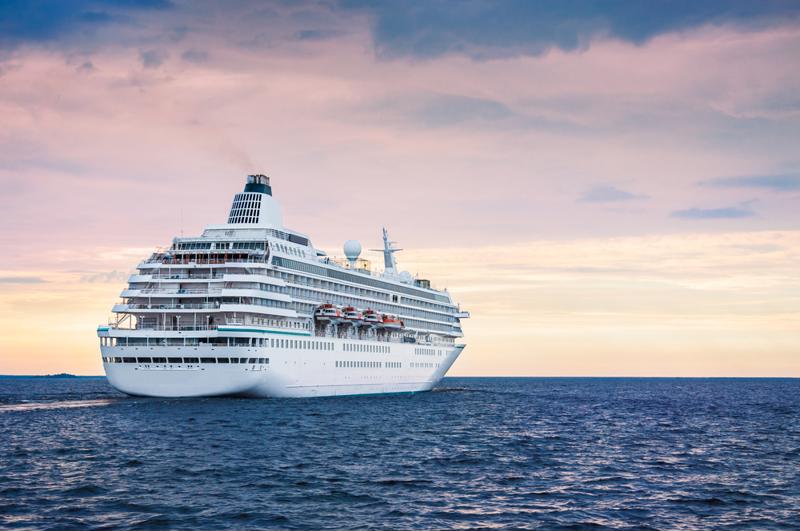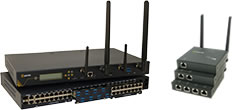
IoT technology enhances maritime shipping, travel
By Max BurkhalderJune 19, 2017
The Internet of Things continues to expand. An estimated 8.4 billion devices are expected to connect to Wi-Fi networks this year, according to research from Gartner. This figure represents an increase of approximately 31 percent over device usage numbers recorded in 2016.
Businesses alone are projected to allocate roughly $964 billion toward IoT technology and services this year, integrating more than 3.1 billion wireless fixtures into existing operations. While industrial organizations will surely account for much of this spend, firms within another space are making considerable headway with IoT-based workflows: maritime entertainment and shipping.
Cruise lines and shipping companies are leveraging IoT technology to bolster offshore operations, improving passenger comfort and asset tracking with the latest web-enabled equipment.

Connected luxury on the open ocean
Cruise ships are synonymous with luxury. It is for this very reason that an estimated 24.7 million passengers took to the seas last year, according to Cruise Lines International Association. Though the industry maintains strong footing in the marketplace, change is necessary. Why?
Millennials and generation xers are slowly but surely embracing cruise culture, spending their hard-earned dollars on offshore getaways. However, these technologically-inclined travelers have different expectations than their parents and grandparents. They strive to access cutting-edge technology, even as they navigate the high seas, a variable that poses serious challenges to cruise lines that once marketed to their services to individuals seeking complete isolation amongst the waves.
Carnival Corporation, the largest leisure travel company in the world, recently released a new IoT device that may accommodate the young island hoppers who wish to use their devices at sea. The organization debuted the fixture, called the Ocean Medallion, in January at the Consumer Electronics Show in Las Vegas, Digital Trends reported.
The wearable disk, which weighs 1.8 ounces and features an aluminum exterior, connects to a wireless network that tracks guests and mines historical data to supply cruise staff with the information they need to provide personalized customer service. The Ocean Medallion leverages two tiny antennas - one based on near-field communication technology, the other Bluetooth enabled - to perform its duties. Passengers can wear the device on a wrist strap or attach it to a necklace.
"What we're bringing to the cruise industry and ships is the next-level guest experience - that's our focus," John Padgett, chief experience and innovation officer for Carnival Corporation, explained. "I like to call it the most extensive experiential Internet of Things that's ever been done. It stages every single experience: food and beverage, merchandise retail, entertainment, lodging, recreation and excursions."
Royal Caribbean International, the world's second largest cruise company, has taken a more utilitarian approach, integrating IoT technology into established backend processes to improve customer experience and streamline operations.
In 2014, the company worked with Microsoft to build IoT-ready infrastructure capable of supporting 650 devices, including point-of-sales terminals and tablets, and collecting key passenger data to bolster services onboard its 22 ships, according to Microsoft. The effort ultimately succeeded, cutting operational costs while also improving the customer experience.
"Commercial freight companies and shipbuilders are outfitting their craft with IoT platforms that offer a variety of business intelligence and navigation services."
Bolstering seaworthy supply chains
Passengers ships are not the only vessels equipped with advanced IoT devices. Commercial freight companies and shipbuilders are outfitting their craft with IoT platforms that offer a variety of business intelligence and navigation services.
South Korean shipbuilder Hyundai Heavy Industries is currently collaborating with Accenture to develop a smart vessel that uses connected sensors to collect and beam essential shipping information back to port, Marine Log reported. The craft would also gather data on onboard mechanical features to facilitate predictive maintenance programs and more effective resource allocation.
In July of last year, Maersk, the largest shipping container firm in the world, announced the conclusion of a similar effort that resulted in a wireless sensor system capable of tracking hundreds of cargo loads simultaneously, Readwrite reported. Now, customers working with the Swedish shipper can view real-time data on their cargo as it moves throughout waterways around the globe. Maersk shipping managers can see the information as well.
"So that means every time there is an incident that is less than optimal for the most optimal production of the voyage, we can interfere immediately and be proactive and change the behavior as it happens," Niels Bruus, director of fleet management for the company, explained.
IoT technology provides clear benefits for companies in both the commercial and entertainment maritime markets. As early adopters see further success, others are likely to follow their lead and integrate IoT devices into their operations.
As this innovation unfolds, Perle will be there to offer the essential connective infrastructure required to support such unique IoT-based workflows. Industry leaders in the space already use our media converters and terminal servers to facilitate advanced offshore networks. Connect with us today to learn more about our work within the marine sector.



